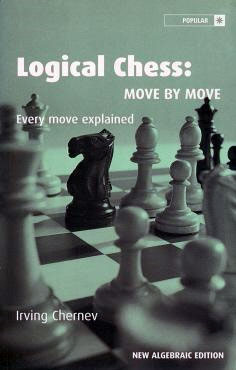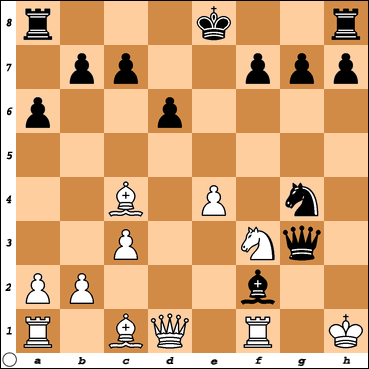I achieved my highest blitz rating on FICS last night of 1234. I think making live videos will improve my ability to make plans quickly and avoid indecision. I have actually been winning some five minute games instead of losing on time!
Here is a game from the book Logical Chess: Move by Move by Irving Chernev. Try to go through the moves in your head without looking at a board. It's not a long game so it should be possible.

A highly recommended book.
von Schieve - Teichmann Berlin 1907 - Guioco Piano
1. e4 e5 2. Nf3 Nc6 3. Bc4
This game comes from the "kingside attack" chapter of this book. A good development of the bishop, it is aggressively pointed at f7. It also contests the d5 square.
3 ... Bc5 4. c3
White aims to establish the central pawn duo of e4 and d4. This c-pawn thrust also makes Qb3 an option to attack f7. It does, however, deprive the queenside knight of his best square. The threat is 5. d4 attacking the bishop and forcing 5 ... exd4 6. cxd4.
4 ... Qe7
Black counters the threat by counterattacking on the e-pawn. If 5. d4 exd4 6. cxd4 then 6 ... Qxe4+ wins the pawn.
5. O-O d6 6. d4
White delayed the d4 thrust to castle his king. The move indirectly protects the e-pawn, because 6 ... exd4 7. cxd4 Qxe4 8. Re1! and the queen is pinned and will be lost.
6 ... Bb6
Black's move d6 allows him to retreat his bishop after 6. d4 and not lose his central pawn.
7. a4 a6 8. a5
White is losing time on a fruitless attempt to trap the bishop or fool black. If 8 ... Bxa5 then 9. d5! Nd8 10. Rxa5 wins a bishop. But black does not fall for it.
8 ... Ba7 9. h3
A weak move that I have been seeing alot in blitz games on FICS. White wants to prevent Bg4 pinning the knight, but it is unnecessary. Chernev writes, "It is better to submit to the pin -- a temporary inconvenience -- than to prevent it by a move that looses the position of the pawns defending the king." Now Bxh3 is a constant option for black to trigger a kingside mating attack.
9 ... Nf6 10. dxe5
Black is poorly developed, so opening up lines in the center will favor black. White has just increased the scope of black's a7 bishop, which now pins the f2-pawn to the white king.
10 ... Nxe5 11. Nxe5 Qxe5
Black is right to replace his e-pawn with pieces. Now white's knight on f3 -- the best defender of the white kingside -- has disappeared, replaced by a powerfully placed queen on e5.
12. Nd2
Although the white e-pawn is attacked twice and defended once, taking it would cost the game: 12 ... Nxe4 13. Nxe4 Qxe4 14. Rc1 pinning the queen.
12 ... Bxh3!
Black has no interest in the e-pawn; he is more interested in the white king.
13. gxh3 Qg3+!
A powerful move; black is utilizing the pin on the f-pawn thanks to the bishop on a7.
14. Kh1 Qxh3+ 15. Kg1 Ng4
Threatening mate on h7. One try that fails immediately is 16. Re1 to give room for the king, which is met by 16 ... Bxf2#.
16. Nf3 Qg3+
Removes one of the defenders, the king, from protection of the f-pawn as well as attacking it a third time with the queen.
17. Kh1 Bxf2! 0 - 1
White resigns. The bishop is taking away the g1 square for the king to escape to, so that black is threatening 18 ... Qh3+ 19. Nh2 Qxh2#. Unfortunately for white, the bishop cannot be taken, because of 18. Rxf2 Nxf2#.



Did you know white can secure a draw after 18. Bxf7+ Kxf7 19. Qd5+ etc.? White has Bg5+ in some lines if black declines the bishop sacrifice. Majnu2006 has a video on this game: http://www.youtube.com/watch?v=RzvSFAZZpMo I own this book as well and sort of lost a little faith in it after learning about the hidden draw here. But I suppose it's still got a lot of good stuff.
ReplyDelete